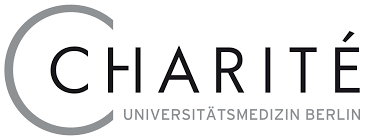
Institute of Microbiology, Infectious Diseases and Immunology
The neuropeptide neuromedin U promotes atopic dermatitis via stimulation of ILC2s
Innate lymphoid cells (ILCs) are important mediators of immune responses at barrier surfaces and mount either tissue-protective or detrimental immune responses. In addition, neurons emerge as regulator of ILCs in tissues through secretion of neuropeptides, such as neuromedin U (NMU). We and others have recently published that cholinergic neurons produce NMU to stimulate ILC2s and type 2 immune responses through neuromedin U receptor 1 (NMUR1). Excessive type 2 responses are hallmarks of atopic diseases, such as atopic dermatitis, allergic asthma, hay fever and food allergy, which have reached pandemic proportions in industrialized countries. However, how neuronal factors, such as NMU trigger atopic disease and how neurons interact with ILC2s during skin inflammation is poorly understood. Using state-of-the-art genetic tools, this proposal takes the timely first steps in answering these questions. The anticipated results will carry tremendous implications for the prevention and therapeutic targeting of atopic diseases.
Specific Aim 1: To dissect the role of the NMU-NMUR1 axis in atopic dermatitis
The detrimental role of ILC2s in atopic diseases is now emerging. Available data provide compelling evidence that neurons, ILC2s and alarmins are part of tissue-specific circuits that trigger skin inflammation in atopic dermatitis but we lack insights in the molecular details. Our preliminary data indicate a non-redundant role for NMU-NMUR1 in atopic dermatitis. Now, we want to understand how NMU triggers ILC2s to promote atopic dermatitis, how ILC2s react to NMU stimulation and how NMU acts in concert with alarmins and interferons, which have been already linked to atopic dermatitis in mice and humans. Finally, we aim to analyze the whole transcriptional network in ILC2s controlled by NMU signaling.
Specific Aim 2: To interrogate how the interaction of NMU+ neurons and ILC2s regulates atopic dermatitis
What role neurons play in shaping the homeostasis of organ function by regulating immune cells in health and disease is one of the outstanding, fundamental questions in the field today. We aim to investigate how the interaction of NMU+ neurons and ILC2s promotes atopic dermatitis. To this end, we aim to understand how NMU+ clusters are composed of, how they promote interactions with ILC2s and how they change during skin inflammation. In order to more directly investigate gene expression and function of neurons, we have developed elegant genetic tools, which allow us to measure gene expression in neurons in steady state and during skin inflammation. Finally, we employ designer drug receptors to specifically change the activation threshold of NMU+ neurons. This set of experiments will allow us to draw conclusion on how NMU+ neurons regulate atopic dermatitis.